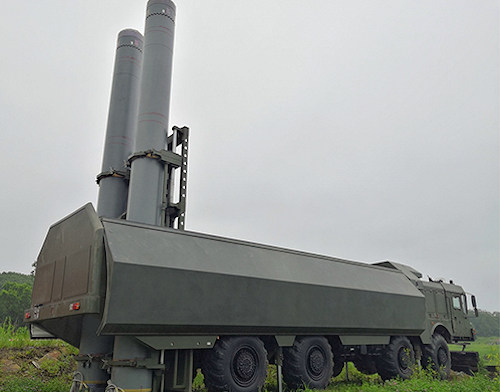During the Cold War, NATO's operational plans provided for the use of Turkish submarines to counter the Voyenno-Morskoi Flot (Russian Navy, ed) inside the Black Sea.
Today the question is whether Turkey could still be a bulwark against the growing Russian forces in the Eastern Mediterranean and Black Seas.
Due to Ankara's purchase of the S-400 missile system, Turkey and the United States have cooled relations, despite being still one of NATO's most important countries.
Turkey in recent years has locally developed various weapon systems such as UCAVs Bayraktar TB2 armed, produced by Roketsan (L-UMTAS, Cirit, MAM), heavily used in the civil wars of Syria, Libya and the Nagorno-Karabakh war.
Not only drones, but also Ankara's naval forces are affected by improvements in offensive capabilities thanks to the development of the Roketsan anti-ship missile Hawk which will complement and replace the Harpoon and will be boarded on the class corvettes Ada (next photo), on the class frigates Istanbul as well as on class destroyers TF-2000.

The cruise missile is also under development Traveler locally produced and powered by an Ivchenko-Progress engine Sub-35, coming from Ukraine. This weapon system will be installed on class boats Reis (Type 214, opening photo) and probably the future mild.
Having boats capable of launching cruise missiles would allow Ankara to be able to deploy one bubble A2 / AD (being able to use also other weapon systems) against the Russian Fleet in the Black Sea.
In fact, Russia has strengthened the local fleet in the naval base of Sevastopol in order to maintain the strategic balance in the Black Sea region and face the Mediterranean. The amount of warships stationed at the naval base increased from 34 to 49, while the total number of submarines went from 1 to 7.
The fleet consists of six class submarines Kilo (Project 636.3: B-261 Novorossiysk, B-237 Rostov-on-Don, B-262 Stary Oskol, B-265 Krasnodar, B-268 Velikiy Novgorod, B-271 Kolpino) and three class frigates Admiral Grigorovich (Admiral Grigorovich, Admiral Essen, Admiral Makarov) equipped with UKSK launchers capable of accommodating various types of cruise or anti-ship missiles (Calibr, Oniks, Zircon) and four class corvettes Buyan-M (Vyshniy Volochyok, Orekhovo-Zuyevo, Ingushetiya, Grayvoron) also equipped with UKSK launcher. It is also estimated that another 3 frigates, a dozen corvettes and 2 landing ships will be built and destined for the Black Sea fleet.
Another major concern due to the "occupation" of Crimea is represented by Russian systems capable of covering almost the entire Black Sea.

When the S-400 surface-to-air missiles Triumph, under the 12th (Sevastopol) and 18th (Feodosia) anti-aircraft missile battalions, began to flow into the Crimea were supported by numerous apparatuses, in particular long-range early warning, target acquisition. In addition, Moscow has also deployed the radar system Monolith-B, capable of performing active and passive search and targeting functions, providing coverage of a large area of the Black Sea.
Il Monolith-B it has a passive detection range of approximately 450 kilometers and gives the Russian military an excellent real-time image of the positions of foreign surface ships sailing the Black Sea.
An increasing number of fixed-wing fighter aircraft belonging to the 2nd Guard Naval Aviation Division and 27th Composite Aviation Division are deployed in Crimea at Gvardeyskoye, Kacha, Simferopol and Belbek airports.
Finally, the armed forces of Moscow also deploy coastal defense systems Bastion-P (photo) e Bastion-S armed with the P-800 anti-ship cruise missile Turkish Onyx, which have a maximum range of 300 km.
The growth of Russian military strength in the Black Sea is jeopardizing Western regional naval dominance.
In the short and medium term, the role of the Voyenno-Morskoi Flot is to serve as a deterrent force to limit US and NATO operations in the Eastern Mediterranean, mainly operating from the Tartus naval base, also thanks to disagreements between members. which do not allow a common strategy within the Alliance for the Black Sea region.
NATO perceives Russia as a threat, judging the attitude of Moscow's ships and vehicles in the Black Sea and the Eastern Mediterranean as provocative, an attitude that has caused an increase in the level of threat and the consequent redeployment of Alliance units in Romania and Bulgaria.
Photo: Turkish National Defense Department / US Navy / MoD Russian Federation












